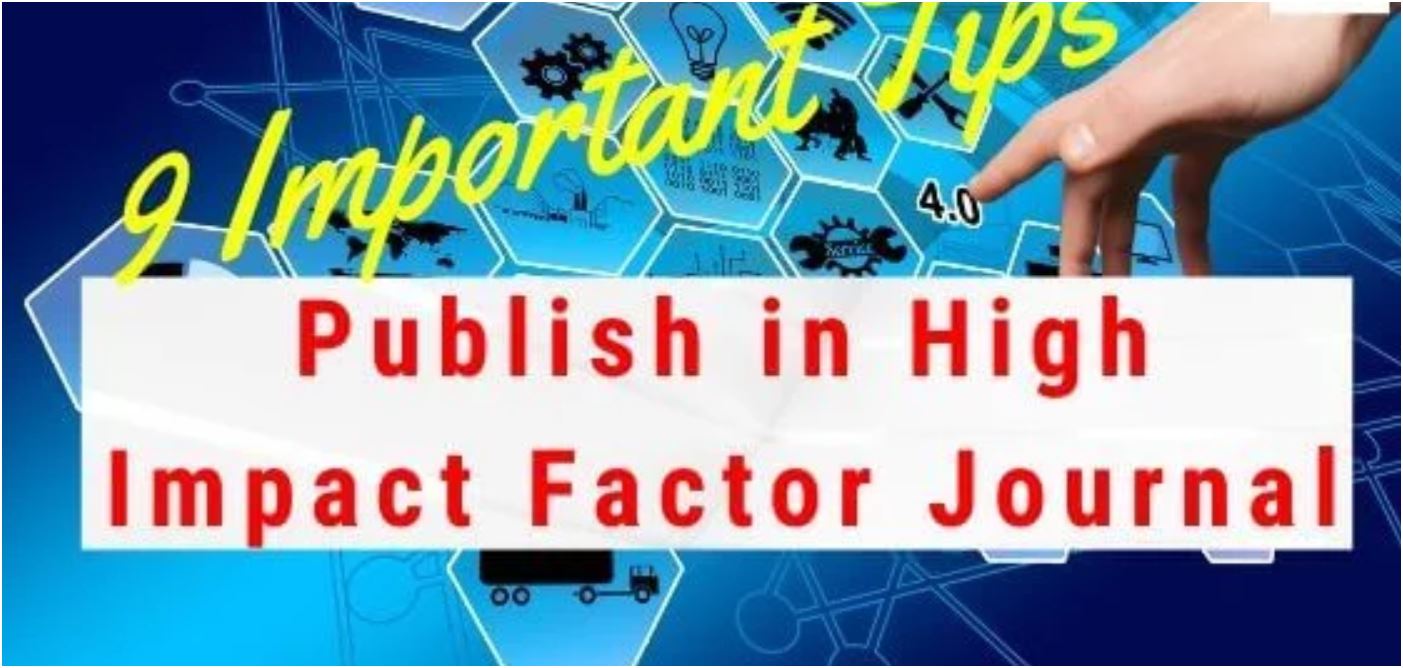
Publication of a High-Quality Journal Article
Many scholars have various motivations for why they want to publish a journal article in their areas or field of specialization and practice.. They may do it because it is critical in their career and could heighten their likelihood of climbing up the ranks. Furthermore, they may have a significant contribution that they would like to make in your field. Perhaps you want to expand theory or fill a certain research gap. Your message may be quite strong if you are challenging conventional wisdom or introducing some novel ideas. If your findings are significant then the only logical step is publication.
Factors to Consider Before Submitting a Journal Article
Your Paper’s Audience
Doctorate thesis: If you wrote your paper for your PHD, then the audience is your department and primarily your educators. An unedited doctorate thesis will likely receive a negative response from any reputable journal. You simply cannot include everything your PHD tried to cover in a high-quality journal. Therefore, strive to pick one topic and develop it further.
Conference paper: A conference paper could be an excellent source of inspiration for a journal article. However, because you prepared it for a different audience, chances are that the information would be inappropriate for a journal. The paper may be useful for conference proceedings or if the conference conveners have published the work, then you would be risking it when you try to publish a journal article.
Journal’s Readers: Sometimes the journal you target may be inappropriate for your work. The following items may make it less likely for you to experience publication:
- The journal’s scope does not align with your work so different readers would access it.
- The journal does not publish review papers, thought pieces or other forms of papers that you may have prepared. In addition, their target audience may only be seeking empirical papers or other primary research.
- Your institution objects to publishing there. Your academic institution may feel that the purpose and audience do not match theirs.
Previous publishers in the field: No topic exists in a vacuum when you publish a journal article. There are probably people who have looked into it, so it is imperative to give context surrounding the topic. Always endeavor to engage the debates and include related work in the field since similar writers will form the bulk of your journal’s readership.
How to Choose the Journal
Before submitting work to a journal, it is imperative to ensure that you do your research. Several resources are available to conduct that research:
- Peers: Instead of trying to reinvent the wheel, check with some of your colleagues at your university whether it is okay to publish on that platform. Chances are that at least one of your peers may have heard of the journal or could have published in it. Ask them what hurdles they experienced and whether you stand a chance of getting published. However, never take your colleagues’ word as final since their experiences may be subjective. Combine their advice with the other strategies in the list below.
- The journal editor: It is possible to get direct information from the editor. If you feel like your paper is highly specialized, talk to the journal’s editor about it and establish whether it would be worth it to submit the paper.
- Journal website: Visit the target journal’s website and check on their scope and purpose. Most reputable publishers include their purpose at the landing page or they have a tab that specifies why they exist. For instance, Stratford Journal explains that it is an online, open-access peer reviewed journal that specializes in business, engineering, education, medicine, and several other fields. Stratford states the journals may be for corporate or academic purposes.
- Journal articles: The target publication probably has plenty of articles available already. Take a look at some of the most popular and decide whether they are appropriate for your area of interest.
Once you have identified compatibility, it helps to know what procedures you need to undergo to have your paper in the journal. Every paper explains what authors need to do. For instance, Stratford has a ‘journal publication process’ section. The steps include submission, examining whether the paper meets the editorial objectives, submitting to three reviewers for manuscript evaluation, preparation of recommendations, a final decision, and acceptance, rejection or revision. Find out specifically the steps your chosen publication adheres to so that you can know exactly what to do.
Manuscript details
Once you have chosen the right journal, the next step is manuscript preparation. Every publication has their own guidelines. As a result, ensure that you examine all the details in your selected journal so that you do not miss your chance to publish a journal article for technical reasons. Several factors may be included in the guidelines, including:
Language requirements: Grammatical errors are unacceptable when trying to get your work in a high-quality journal. Consequently, you may need to seek assistance from other people to check your manuscript. Get someone to take a look at your paper. You may also employ editing services to heighten your likelihood of acceptance.
Referencing: Every journal has stipulations on the format it relies on. Most papers accept APA referencing but you need to be sure exactly what formats the targeted journal follows. In-text citations and sample references published by the journal can help you organize your information clearly. If a journal does not specifically mention the referencing style it adheres to, you may have to choose one and remain consistent throughout your paper. Ensure that you pick the latest version of the referencing style.
Paper sections: Most journals have specific sections that they need included in a journal before publishing. These sections include a title, abstract, body texts, results, discussions, recommendations, references and conclusion.
1. Abstract and title: An abstract usually is about 250 words. You are expected to include keywords in the abstract to make it easy to categorize your work. You should also do some research keyword selection and select an appropriate journal title.
2. Methodology: One of the places where most aspiring authors go wrong is with their methodology. You ought to ensure that your measures and practices are so precise that another person can conduct the experiment based on the information you have. Moreover, remember to address any issues that may impede your reliability or validity when you want to publish a journal article.
3. Analysis, findings discussion and recommendations: Having figures and tables is always a good way of increasing understanding of your findings. Additionally, check the formatting requirements for the all figures and tables in your selected journals.
An analysis should adhere to general protocols within the industry. Try and be as systematic as possible so that people can deduce why you came to your respective outcomes. Besides that, your discussion needs to connect with your research hypotheses and objectives so that you can confirm whether you did things correctly or not.
4. Conclusion and recommendations: All recommendations should come directly from your evidence. Furthermore, you should acknowledge that your research has weaknesses and that the use those limitations are a basis for the recommendations you make.
Cover letter: Aside from the details in the paper, writers also have to include a cover letter that contains the most pertinent information about their research. When drafting the cover letter, some novice writers simply rewrite the abstract. Others start to analyze their paper and become redundant since reviewers will read the paper itself. Take time to provide new information in the cover letter by addressing some of the big picture issues.
Important Tips to Enhance Success When You Publish a Journal Article
Article Argument: All reputable journals consider the argument you are making. Everyone needs to understand the heart of your paper quite early on. In other words, a clear argument should show up in the first line or at the most, the first paragraph of your paper. Additionally, this argument needs to weave throughout the entire article so that people do not struggle to find it as they read the material. No section in your paper should be missing the key argument.
Revisions: Sometimes, the difference between success and failure in publishing depends on how well you handle the revision section. Upon receiving information from the journal, read the feedback word for word. Go through the recommendations several times so that you can understand why the reviewers felt that your paper needed improvements. In case of any misunderstanding or vague statements, contact the paper and ask for clarification, but only do so after several days of reading and absorbing the feedback.
Sometimes, you may be unable to implement some of the recommendations provided. In those situations, contact the editor and explain why some of the changes are unrealistic. If your explanation is rational and you put it across objectively, the reviewers are likely to think twice. Conversely, if you have made changes, highlight them before seconding the manuscript a second time.
Exercise patience: Certain publications can take you through even three iterations of your work. Furthermore, the review process itself can be longer than anticipated. In such contexts, you may need to contact the editor if you feel like the fist review has taken too long to arrive. However, the first inquiry ought to mirror the stipulations in the journal. It is when the journal has exceeded the time stated in its guidelines that you should reach out.
Having a positive mindset is critical to success. When you receive criticism about work that you spent months and possibly years doing, you can feel disheartened. Always remember that revisions are a normal part of the journal publication process and that the peer review process is there to enhance the standard of your work, not undermine it.
Rejections illuminate rather than complicate your research: In some cases, a publisher may out rightly reject your paper. A rejection is not often the end of the road for that specific journal. The editor will usually attach the reviewer’s comments. Read those comments carefully to decipher the underlying reasons. Sometimes it could that the journal was inappropriate your paper or it may lack focus or your methodological issues are a problem.
Once you have found those core issues, revise your paper incorporating them. On top of that, find another journal that has the right fit then submit it. If you mentally prepare for a rejection, it is likely that you will transition to the next journal more easily than if you rested all your hopes on the first one.
Avoid writing mistakes: Often new authors that want to publish a journal article may tell their story chronologically. You may be tempted to share all the steps you underwent even when the experiments needed you to go back and forth. It is better to use a logical approach for arranging your ideas in the methodology section rather than an ideological one.
Sometimes, composing a complete journal article could take longer than expected. In those respects, you need to adopt habits that accelerate your writing process. Instead of editing and writing at the same time, you may want to write down things in a rudimentary way. After you completed your first draft, you may then go back to edit. Editing while writing often blocks the flow of ideas and lengthens the writing process.
Highlight the research gap: You may face rejection when you do not explain the background behind your research well. Strive to place your work in the wider scholarly picture from the beginning. In other words, do not wait for the literature review to highlight the gaps. A good rule of thumb is to show why your research matters, the knowledge it is adding and why it is necessary at this point in time. Unless, the reasons for the research are clear, you may likely face rejection.
Conclusion
If you want to publish a journal article, you have to prepare for a lot of work ahead. Choosing the right journal is usually the first step and can get you there in half the time. It is also pivotal to consider some formatting issues as every journal has author guidelines. When writing the actual journal, take time to include stipulated sections and strive to be as clear as possible.
After you receive feedback from the publisher, take time to digest the information before you respond. You may need to seek clarification, challenge some recommendations or merely rework the article. In case of a rejection, then identifying the main reasons why, using those comments and submitting the work to another journal may be useful. Most journal articles seem clear and simple, yet they do not show the many steps, failures, and orientations an author had to undergo before getting there. With patience and diligence, you will get published.

